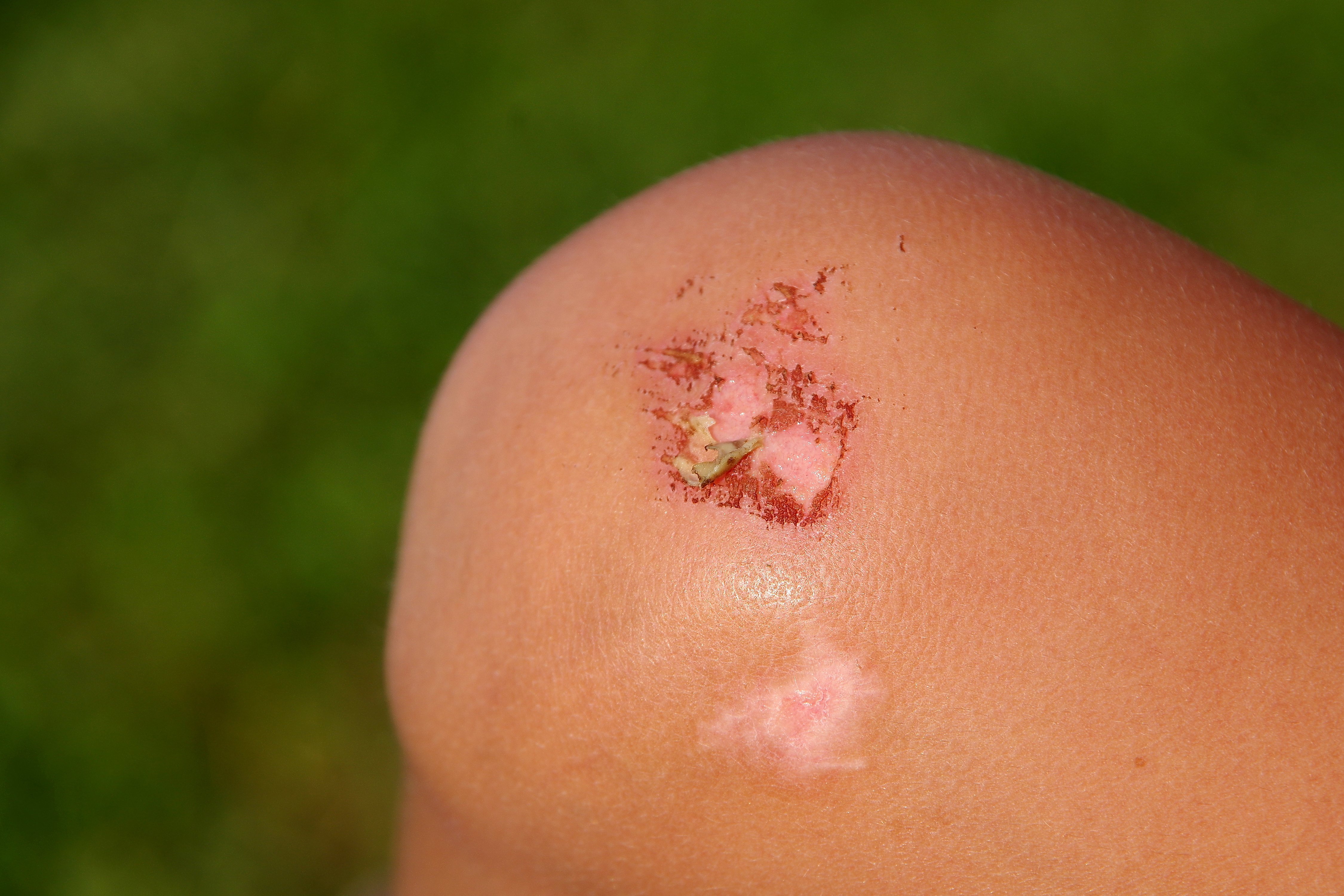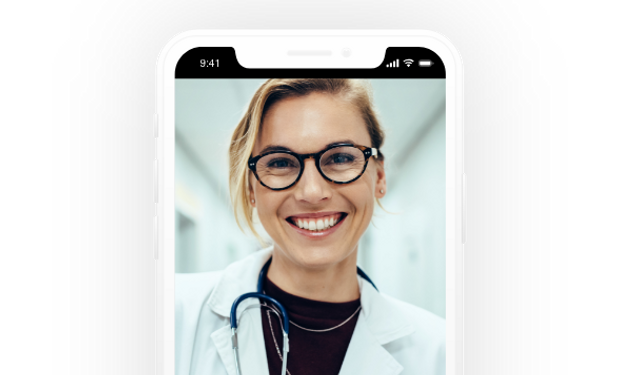WHAT WE TREAT
Abrasions
Minor cuts, scrapes, and abrasions are part of everyday life. The majority of abrasions are accidental and can occur at any time.
Abrasions most commonly occur with young children, and during the warmer spring and summer months when skin is more exposed.
Long pants and coats worn in the colder winter season offer an extra layer of protection from cuts and scrapes. These minor, superficial, and basic skin injuries are simple to treat and often do not require further medical attention.

What are Abrasions?
An abrasion, also known as an excoriation or “brush burn,” is a minor injury that occurs when the skin is rubbed or torn off. It is a shallow wound, typically a wearing away of the top layer of skin (the epidermis) due to an applied friction force against the body. The scraped-off surface layer of skin from an abrasion can contain particles of dirt, which may lead to an infection or other complication if not cleaned and attended to. Most abrasions can be treated at home, and a trip to the emergency room is typically not necessary.
Abrasions are distinguished from incised wounds, which are much more serious injuries. While an abrasion is an injury that damages only the superficial layers of skin, and incised wound is a deeper cut (typically with a sharp object), that has the potential for serious and severe bleeding.
What Causes Abrasions?
Abrasions are common, everyday occurrences, and can happen in many ordinary situations. Children, people who are often “on the go,” and those who play contact sports are just some examples of people who commonly experience injuries from abrasions, cuts, and scrapes. Abrasions are most commonly caused by falling, skidding, or other types of accidents. Many abrasions occur suddenly and without warning, and may not even be noticed until after the injury.
Abrasions typically occur on the extremities, exposed arms and legs, when the skin is scratched against a hard or rough surface. Areas of the body such as the hands, knees, shins, ankles, and elbows are more susceptible to abrasions, as they are bonier and covered with thin skin than parts of the body that contain thicker skin and more padding.
Factors such as patient’s age, health, extent of injury, possibility of infection, and availability of first aid supplies help to determine the amount of time necessary for an abrasion to heal. Other factors that affect the rate of abrasion healing include:
-
Diet – the immune system and skin need healthy and proper nutrition
-
External temperature and weather conditions
-
Smoking
-
Drug use
-
Pre-existing medical conditions, such as vascular disease
Most abrasions do not require emergency care, and heal within a few days to a week. During the healing process, your body produces platelets to help stop the bleeding. These platelets clot together, and form a scab, which protects the injured area. New skin cells quickly form to replace the damaged layer, and white blood cells help to protect from further injury and work to prevent infection. Most scabs typically fall off on their own after one to two weeks, leaving behind the newly formed layer of skin. By this time, the abrasion is fully healed.
Signs and Symptoms of an Abrasion
If you have suffered from an abrasion, you may experience bleeding, discomfort, peeling or scabbing of the top layer of your skin. You may also notice a pinkish fluid oozing from the affected area.
Abrasions located on the head and face may bleed more than abrasions located elsewhere on the body, due to the extensive vasculature and blood supply to the head.
Larger abrasions may produce more pain than smaller abrasions or minor cuts, due to more exposed nerve endings from scraping of the skin.
Prevention of Abrasions
It is difficult to fully prevent an abrasion, as they are often accidental and due to the exposures of everyday life. Awareness of your surroundings and paying close attention to what you are doing can help reduce the likelihood of an accidental scrape, fall, or injury. Other precautionary steps include:
-
Wearing gloves, long sleeves, pants, or other layers of clothing as additional layers of protection for the skin
-
Wearing safety gear such as safety goggles, closed-toe shoes, and glasses
-
Wearing helmets and protective pads for knees, wrists, elbows, and hands during sports or other physical activities
-
Knowing how to properly use tools, sharp objects, and kitchen supplies
-
Ensuring you are in a well-lit area
-
Assessing your home or work place for possible risks and hazards, and removing such hazards
-
Educating children on the importance of safety
-
Ensuring your tetanus shot or booster is up to date
Keeping a well-stocked first-aid kit available can help provide immediate treatment for abrasions, and can help lessen the severity of injuries as they are encountered. Some helpful items for managing abrasion-related injuries include:
-
Antibiotic ointment
-
Bandages
-
Gauze
-
Clean cloth
Treatment of Abrasions
Abrasions are, for the most part, minor injuries that can be treated relatively easily at home, with supplies commonly found in a first-aid kit.
If a child has suffered an abrasion, he or she may be uncomfortable, irritable, or frightened. Calm the child, let him or her know that you can help, and that any discomfort will be temporary.
When you notice an abrasion, the first step you should take is to thoroughly wash your hands to help stop the spread of an infection to the affected area while caring for the wound.
Rinse and clean the abrasion with cool or lukewarm water and mild soap or an anti-bacterial cleanser. Try not to directly scrub the wound, but attempt to gently remove any dirt particles or debris. Hold the affected area under a water faucet for a couple of minutes. Thoroughly cleaning the wound will help avoid the risk of complications, such as an infection or tetanus. It is typically not necessary to use stronger cleaning solutions such as hydrogen peroxide, iodine cleanser, or rubbing alcohol for minor wounds such as abrasions, as these agents may cause additional and unnecessary discomfort or irritation to the injured tissues.
Most cuts, scrapes, and minor abrasions will bleed for only a short period of time. If the bleeding has not subsided on its own, work to stop the bleeding by applying gentle and direct pressure with a clean cloth, sterile bandage, or piece of gauze, and elevate the wound. Lifting the cloth, gauze, or bandage to check on the wound may cause additional bleeding, so it is important to continue to maintain firm pressure over the abrasion. If the bleeding soaks or seeps through the dressing, apply an additional layer and continue to maintain pressure. Further bleeding, if unable to be stopped within about 10-20 minutes, should be assessed by a medical provider.
To help prevent infection, apply a thin layer of antibiotic ointment (such as Neosporin, Bacitracin, or Polysporin/polymyxin B.) Although these ointments do not help the wound heal faster, they help to keep the affected area moist, help prevent infection, and aid in the body’s natural healing process. If you notice the formation of a rash or redness due to antibiotic ointment use, suspend use of the ointment.
Protect and cover the abrasion with a bandage or a piece of gauze with tape. This helps keep the wound clean, prevents bacteria from infecting the area, and helps keep the wound from reopening. Remember to change the dressing at least once a day, or when the affected area gets wet or dirty.
Most abrasions and minor scratches heal in a few days. The formation of a scab is your body’s natural way for protecting the wound from dirt and germs, and a sign that new skin is growing beneath. Try not to pick at or scratch scabs, as the new skin underneath may not yet be fully developed.
Keep a close watch on the injury, and watch for signs of infection or complications. If the abrasion does not seem to be healing, seek medical attention. You may also need an updated tetanus shot, particularly if you have not had a booster shot in the last five years. If you are worried about the healing of your abrasion, consult with a medical provider.
When Should I Call a Doctor?
Abrasions can affect anyone, and are common among school-aged children. The majority of abrasions can be treated at home by cleaning and dressing the wound, ensuring that any bleeding is stopped. Seek medical care if the wound is bleeding heavily, very deep, or has a foreign object lodged within it. Other circumstances that warrant medical attention include:
-
When the abrasion is located on your face, particularly if the abrasion is large
-
If the abrasion is near your eye
-
If the abrasion covers a large area of your body
-
If you are feeling numb or have lost sensation in the area of the abrasion
-
If the cut contains jagged or wide, gaping open wounds
-
When the cut is deeper than ¼ inch
-
If you can see underlying fat or muscle
-
If you are unable to fully clean the wound, and dirt or foreign objects remain lodged in the wound
-
If you were punctured or scraped by a rusty or very dirty object
-
If you have not received an updated tetanus shot in the last 5 years
-
If the cause of your injury was due to a human or animal bite
Most abrasions should fully heal within a week. If the abrasion or the area surrounding it continues to remain warm, swollen, or red, an infection may be present and antibiotics may be necessary to treat the injury. Other signs of infection include:
-
Wound not appearing to heal, or worsening, after a few days of proper care
-
Increasing amounts of pain
-
Fever
-
Discharge, pus, or drainage coming from the abrasion
-
Abrasion surrounded by red streaks
Consider speaking with a medical provider if you are concerned about your wound healing, or would like additional medical advice and treatment information.
If this is a medical emergency, please call 911. For mental health emergencies, call 988.
Have a visit today
Virtual care is a convenient and secure way to receive medical care for abrasions by phone (where permitted) or video, 24/7/365.
